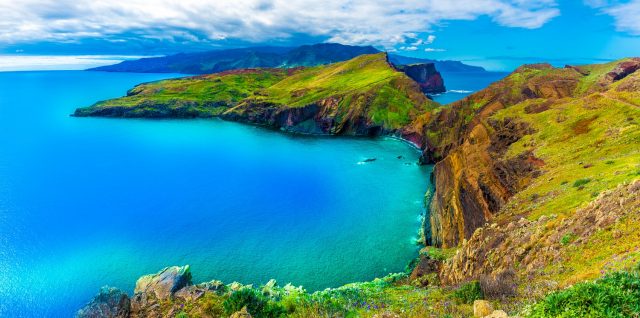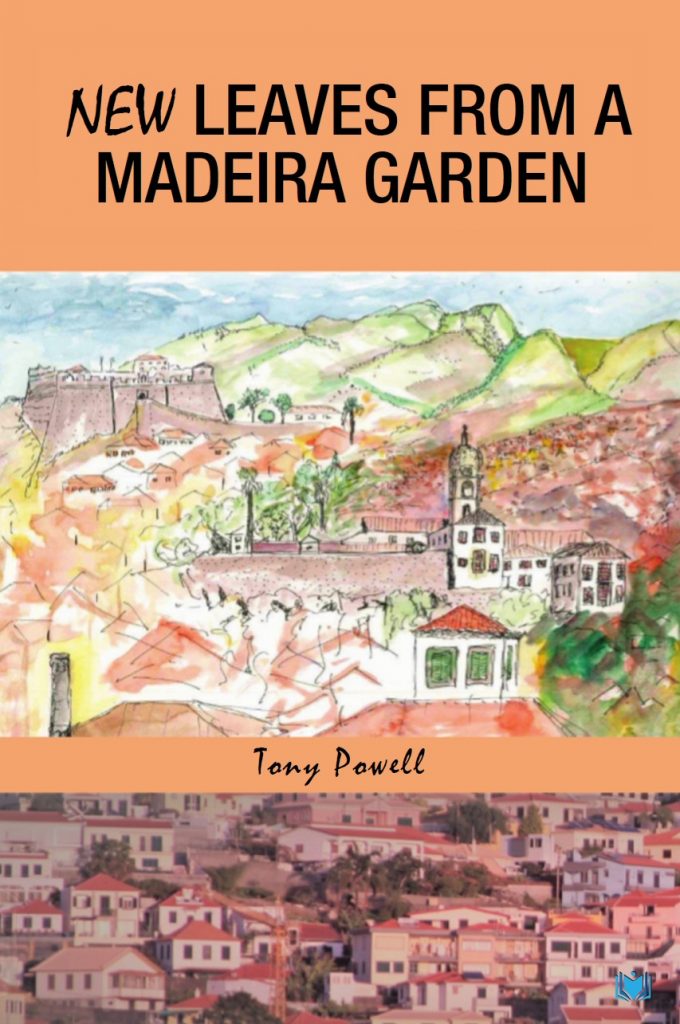An excerpt from The Return, taken from New Leaves From a Madeira Garden by Tony Powell.
Madeira had been a regular port of call for seaborne travellers since the seventeenth century. In the nineteenth and twentieth centuries, the Union-Castle Line’s regular mail service to South Africa found Madeira an ideal stop-off on the thirteen-day voyage from Southampton to the Cape. The service eventually became unprofitable and ceased operating in the late 1970s. Today, tourists arriving by sea are the sole province of the cruise ships, about which more later.
The first seaplane landed in Funchal in 1921, although they had no regular flying boat service until 1949. The airport on Madeira laid down a runway for the first time in 1964, beginning a new chapter for the island, and the start of tourism for the masses.
For anyone planning a stay on Madeira of more than a few hours, the jet aircraft and Madeira’s airport is now the customary point of arrival. Air turbulence over the Bay of Biscay has largely replaced the rigours of the seaborne passage far below. In place of a voyage from the UK lasting a little over three days, we have substituted a flight taking a little over three hours.
For us modern-day travellers, the anticipation of arrival is short-lived. No sooner depart than arrive. No time to while away monotonous hours dreaming of the “soft luxury of an Atlantic Island”. I have always felt, like the Christmas festive season, anticipation can be as exciting as the main event. The fading light of Christmas Day afternoon seems to descend in double-quick time, while the collective early days of December hold considerably more hours to foster the anticipation, whatever one’s age.
How does one prepare for a stay of four or five months, not just on Madeira, but anywhere in the world? To my mind, it takes stays of a month or more to transport the visit from being a holiday or vacation onto the level of residing or living in a place. To leave behind a former life, albeit briefly, substituting something else in its place, for four or five months, requires a quite different change in mindset.
With a two or three-week holiday, the moment of return is always within the mind’s mathematical calculation. During the first week, the conclusion of the holiday is next week, and any thoughts of return are easily pushed to one side. When ‘next week’ does arrive, we may perhaps count down the days and only on the penultimate day do we cling like limpets to those last few, fleeting, precious moments. Too often, we find ourselves anxious to be doing, just for the sake of doing, to fill every available waking moment, not wishing to waste a second.
With a stay lasting four or five months, however, the return date is so far removed at the start as to be almost irrelevant. In its place falls a seemingly endless succession of days to be filled in whatever way one chooses. There is no requirement to ‘do’ something today. It’s merely an option. And if you choose not to do something, other days are available. In this carefree state, the days just slip by. To lose a day due to the weather or for some other reason is never a day lost, merely one spent.
In the first month of a long stay, I have often experienced something akin to a form of intoxication, brought about by a surplus of days. It’s almost as if the mind, in a confused, heady state, is constantly searching for an end date by which it may set its own timetable. There is one, of course, but it is so far ahead as to be almost meaningless. Modern minds cannot cope with such lengthy periods. We are too far gone, programmed to live in a series of ‘boxed’ short intervals, requiring a beginning, a middle and an end, and for all three to be measurable at any one time.
By the end of the first month, however, the number of days which have already passed just roll into one. You may even lose track of when you did something; you accept the next day in much the same way as a beach accepts the next incoming tide. It just happens. It is only in the last two or three weeks that the brain re-engages, registering that things are coming to an end, and so begins the countdown to the stay’s conclusion.
The winter weather on Madeira lends itself well to longer stays. We have had many prolonged spells of hot, sun-drenched days, even in January. But it cannot be relied upon. We have known people visit for a week, experiencing a succession of incessantly rainy days, leaving them with a poor impression of the island’s attributes. For those here for a prolonged period, the inclement days do not leave so much of a hole in the holiday calendar, as they would, say, in a fortnight’s stay.



